Time Walk is one of the most powerful cards ever printed.
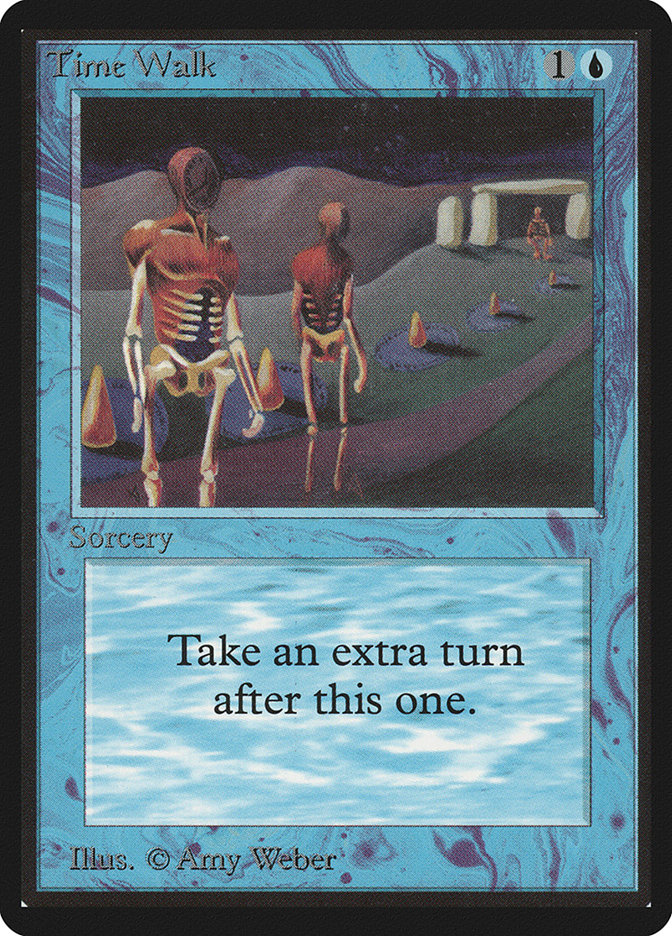
One of Magic’s fabled “Power Nine,” Time Walk lets you enjoy another turn for a paltry two mana. That means another draw step, another combat phase, and a chance to cast more spells than your opponent. Despite the bizarre art, Time Walk has clocked opponents for years and is one of the most venerated cards in the history of the game.
Since then, things have taken a turn.
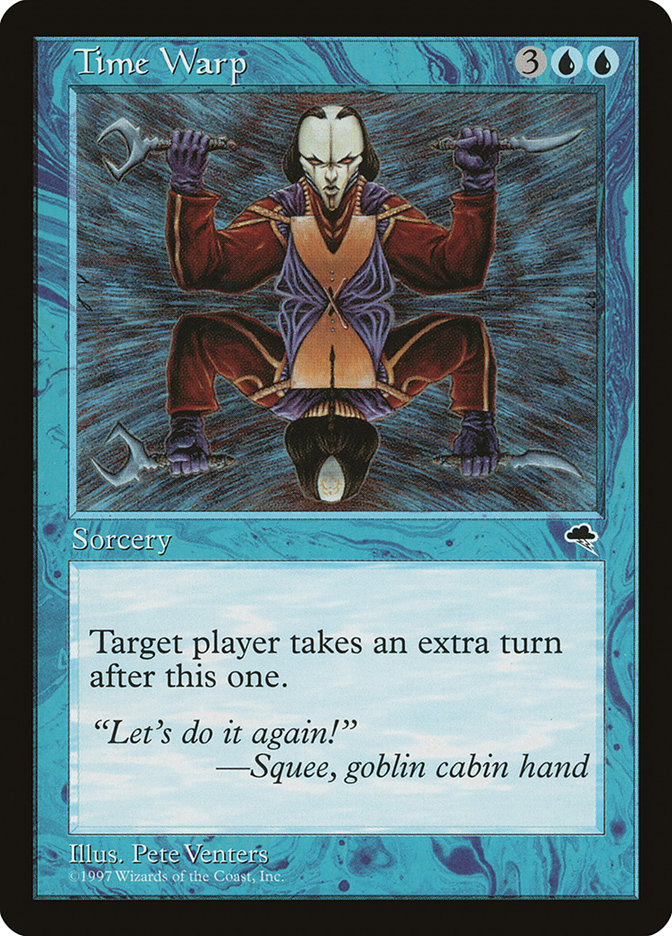
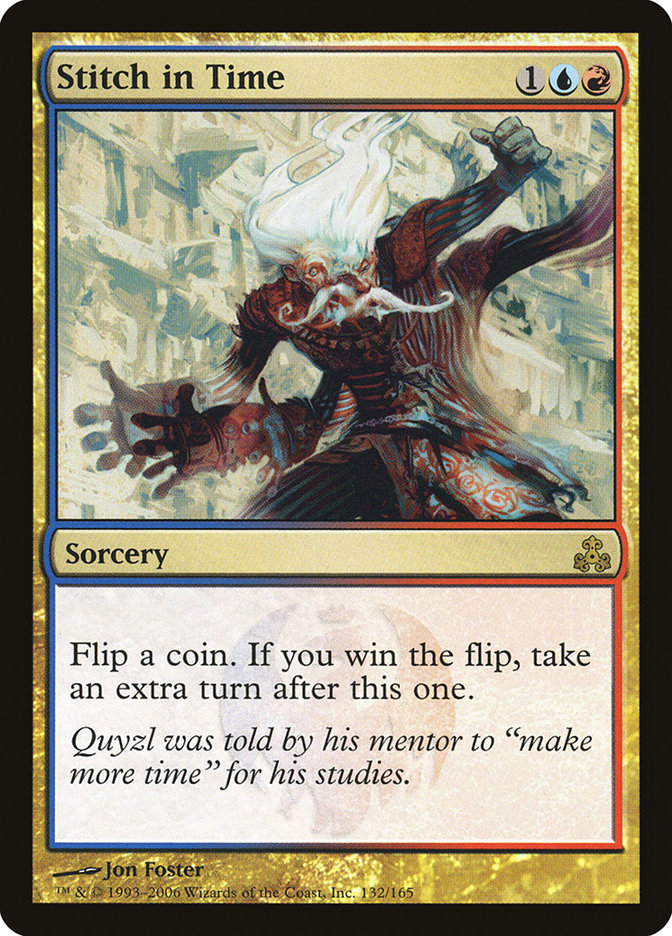
Awesome Rocky Horror Picture Show references aside, extra turn effects have gotten more expensive, more difficult to cast, and less reliable overall. Still, they attract attention every time they’re printed, and our most recent iteration of Time Walk is no exception.

Well, sort of.
People got pumped about Temporal Mastery when it was released three years ago because all they were looking at was the miracle cost, which lets you cast it as actual Time Walk, and admittedly it had its day to shine in the sun. With delve now making a huge resurgence across every format, Temporal Trespass was the next in line to bear the mantle of extra turns, allowing a more reliable, three-mana effect in Standard.
So why is this card a bulk Mythic just a few months following its release?
I could think of four real reasons. First, eight delved cards is a lot. You have to build your deck around it, using numerous spells to fuel your graveyard at the expense of doing other things, like casting creatures and spells that actually kill your opponent. Second, UUU is pretty hard for most decks to hit. If you want to use Temporal Trespass you’re looking at a blue core through and through, and you also want to have other mana up to cast other spells the moment after you take an extra turn. Third, the opportunity cost is huge; If you consider that a smaller mana and delve commitment can draw you three cards via Treasure Cruise or pick two good ones with Dig Through Time, spending your hard-earned resources on an extra turn seems like a waste.
Finally, and perhaps most importantly, there’s not really a way for us to leverage extra turns these days. When you’re thinking of adding extra turns to your deck, you should consider why you’re doing it. It earns you an extra draw step, yes, but you lost a draw step drawing the Time Walk, so it can’t just be for that. It could be that you want an extra combat step, but that requires a lot of things to be going right to be relevant, namely that you can safely attack into your opponent’s board state twice without losing a lot of soldiers in the process. It could be just to cast more spells, but the more expensive your extra turn is the less room you have to cast something else and/or capitalize on the “free mana” that your current turn provides. If that’s what you’re after, just cast Collected Company.
That leaves planeswalker activations, which brings us to today’s deck. Are there good planeswalkers that are fast enough to get to their ultimate that taking an extra turn can help really get us over that hump? If we’re using that turn to get a free activation along with all of the other benefits discussed above, that might do it – and that’s where we find today’s deck.
As stated earlier, Temporal Trespass requires a heavy blue commitment, so sticking to blue-hued ‘walkers would probably be best. Because they’d be my main threats, I’d want to get them out early, so I took two of my favorite planeswalkers as the base: Ashiok and Kiora.
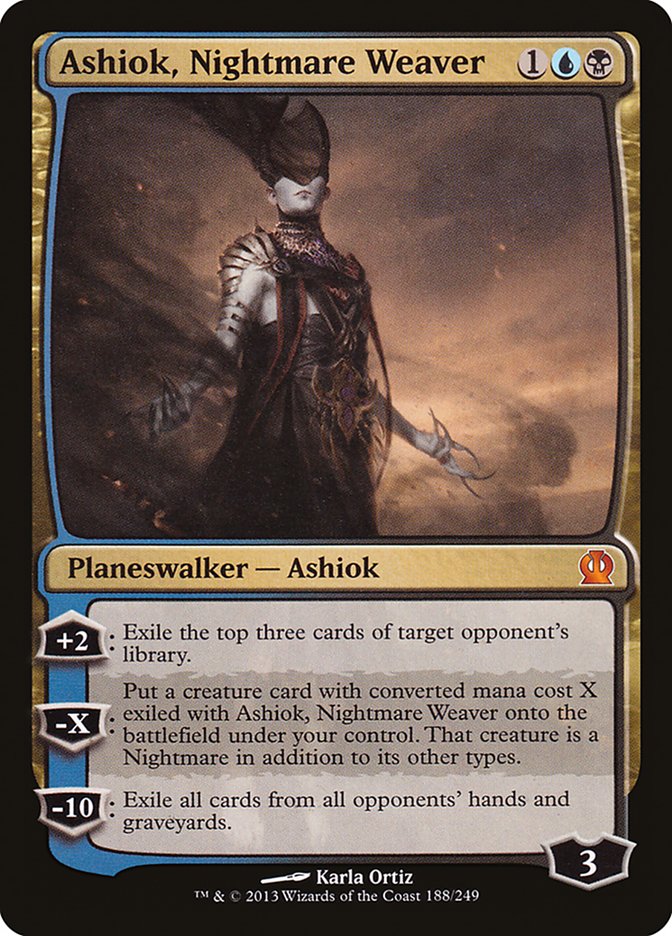
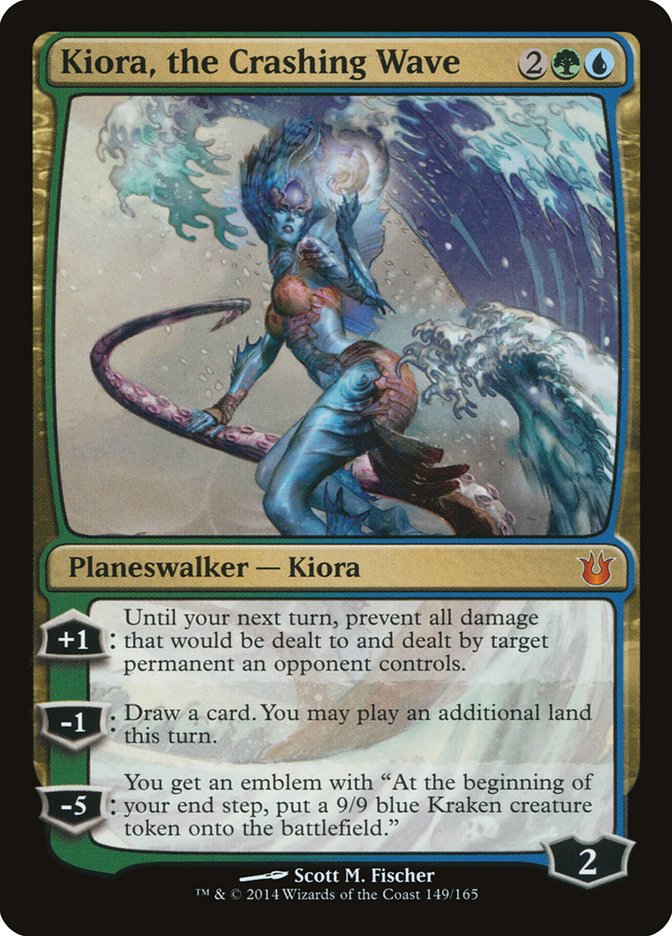
Y’all know I love Ashiok, and Kiora’s a ‘walker I’ve wanted to try for a while. With some critical delve support, we could build an exciting, dynamic deck that has a good blend of planeswalker protection, removal, and blockers to keep my planeswalkers ‘walking until either ultimate can close out the game.
The initial decklist looked like this:
Creatures (11)
Planeswalkers (11)
- 2 Liliana Vess
- 3 Ashiok, Nightmare Weaver
- 3 Kiora, the Crashing Wave
- 1 Jace, the Living Guildpact
- 1 Garruk, Apex Predator
- 1 Ugin, the Spirit Dragon
Lands (26)
Spells (12)

This list emerged about three weeks ago as a rough concept, with big enablers like Taigam’s Scheming to help the Trespass and to fix my draw steps. I had a fair amount of the cards and proxied up the rest. In quick goldfishing, though, I found that the deck was inconsistent, anemic, and just generally not all that impactful. I found that I wanted to curve into my two main planeswalkers ASAP, and anything that stopped me from doing that needed to go.
As I didn’t have (nor did I want to invest in) Sylvan Caryatids, I used some pieces of other previous decks and some cheap additions to round out a second version:
Creatures (8)
Planeswalkers (9)
Lands (28)
Spells (15)
- 4 Drown in Sorrow
- 1 Worst Fears
- 1 The Chain Veil
- 4 Sultai Charm
- 1 Taigam's Scheming
- 2 Crux of Fate
- 2 Temporal Trespass
Sideboard

As you can see, I slimmed down a bit on the nonsense, added early sweepers to combat one-drop decks and added Kiora’s Follower designed to go with the oh-so-cute Chain Veil as a way to get an extra turn’s worth of planeswalker activations. I tested it out the weekend before last at my local shop and, while it was more fun to play than the original, it was still playing a fair amount of suboptimal spells and the matches I played required significant sideboarding. Sultai Charm was a really nice addition, but it was slow. It was highly matchup dependent, but it was never bad. Hero’s Downfall, likewise, was pretty slow in today’s metagame for a one-for-one, so I decided to keep it in the board for a deck like my own.
It was a week before I tested it again, and in the meantime I did some soul deck searching. Could… could it be that the weakest card in my deck, the card that was holding the deck back, was the reason I built the deck in the first place?
Ehh, it was a bulk mythic anyway.
Creatures (7)
Planeswalkers (8)
Lands (26)
Spells (19)

Look ma, no Time Walks!
I realized that, in the end, if protecting my planeswalkers was my main goal, Fog would do just fine as a Time Walk. Winds of Qal Sisma is the format’s best fog effect, as everything else is more specific (Defend the Hearth still lets planeswalkers take damage, for example.) Combined with a playset of Dig Through Time and Nyx Weaver, which could fuel delve and allow a rebuy of the deck’s best cards, this seemed much more solid. Anticipates gave me additional card selection, replacing the bulky Taigam’s Scheming, and the top end had some bigger cards like Silumgar’s Command. The sideboard featured more two-mana spells to keep me in the game against fast decks, and Ugin, who actually was pretty irrelevant most of the time, was relegated to the side fifteen. Likewise, Liliana Vess kept shifting farther away from the limelight, and since most of the time she just tutored for Ugin before dying, she got the axe too.
A friend of mine, also a testing junkie, ran a gauntlet with me where he tested Abzan Aggro, Jeskai Dragons, and Atarka Red against the deck. It quickly became clear that, while more fun and consistent than ever, it still needed more consistency and reliability to stand up to the format’s best decks. Sultai Charm, which I’d been on the fence about for the last week, finally slid to the sideboard, and I added a handful of cards to replace it. The mana was still a little off, too, and without any Mana Confluences or the lifegain to offset the pain, I had to improvise with a shift of tapped lands and basic Forests. Since my pal and I tested, I’ve landed here with what I feel is a pretty final version:
Creatures (8)
Planeswalkers (8)
Lands (26)
Spells (18)
- 2 Drown in Sorrow
- 3 Murderous Cut
- 4 Dig Through Time
- 2 Crux of Fate
- 2 Winds of Qal Sisma
- 4 Anticipate
- 1 Silumgar's Command
Sideboard

All better!
After testing, I adjusted the landbase, tweaked the spell balance, and added a Hornet Queen. The fourth Anticipate gave me more keepable hands while the land adjustment kept me on-time with Satyr Wayfinder. Murderous Cut, which would be infinitely more efficient and powerful than Sultai Charm’s most-used mode, would have plenty of fuel thanks to Nyx Weaver and Satyr Wayfinder. Perhaps most notably, I finally cut the cord with planeswalker control running Ugin, the Spirit Dragon. It might sound wrong at first, but there was literally no point to it, and it was never the right card to draw; they’d often be at 20 life or close, so his first ability was weak, and his –X was just an expensive Perilous Vault, which was unhelpful seeing as it would often eliminate all of my planeswalkers too. Maybe next time, Ugin.
This article isn’t so much about the deck as it is about what I learned; efficiency and flexibility really matter. You can emulate more powerful cards with smaller, more accessible effects if you build a deck and, more importantly, play to your opponent’s weaknesses. Understanding where you are in the game, what cards can keep you going, and what cards will ultimately be your strongest spells are all important parts of both deckbuilding and playing the game itself. In short, you don’t have to cast Time Walk to take an extra turn.
I’ve put a lot of time and thought into the Sultai deck, and I’m still planning to test and improve it. The SCG Open Series is coming to Indianapolis in two weeks, and I’m planning to head up there with a brew I haven’t shared with you all yet. I’ve been rigorously testing and improving that list with anyone who will battle me, and hopefully we’ll see something new break into that event’s Top Eight.
What’s your favorite way to take an extra turn? Is the powerful behemoth Time Stretch your jam, or do you prefer the undercosted, risky nature of Stitch in Time? Maybe you’ve gotten Temporal Trespass to work in ways I could never have come up with. Let me know in the forums below, go ahead: I’ve got time!

